Special Report - Fine Gael in Government: Party asking itself exactly what it stands for
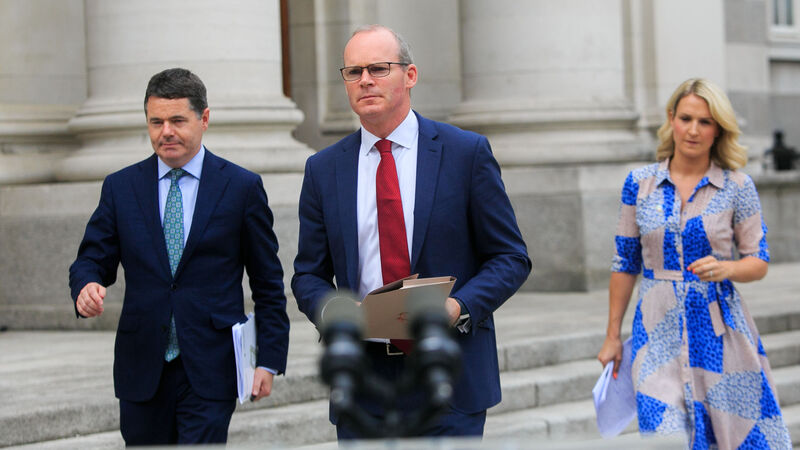
Just what kind of party does Fine Gael want to be?
Routed at the polls in February for the second time in succession, the party bizarrely finds itself still in power.
But the transition to the new Government has been far from trouble-free with ex-taoiseach Leo Varadkar and his former tánaiste Simon Coveney struggling to adjust to life in the passenger seat.
Coveney’s reduced status in Government from his eminent Brexit perch put him in the frame to be Phil Hogan’s replacement, even before the official resignation was confirmed last Wednesday night.
Having pretended to be a catch-all party in 2011 when it won 76 seats, Fine Gael buckled under the weight of that delusion and has retreated into the marginal minority force it traditionally has been.
Now down to 35 seats in the Dáil, that Leo Varadkar is in line to once again occupy the Taoiseach’s office is simply remarkable.
With the party still not finished with its own internal examination of what went wrong in February, there are many within Fine Gael who are uneasy about its presence in Government with Fianna Fáil, and are doubtful the Government will last its full term.
“Coalition with Fianna Fáil made me sick, to be honest. I was very much against it. But Covid-19 made me rethink what was in the best interests of the country at a time of crisis,” Cork County councillor Susan McCarthy says.
“In the run-up to it, I spoke to Simon, Leo, and other senior party members who did liaise with us but I am not sure how much they listened. I don’t know if the Government will last five years. I wouldn’t be hopeful. The behaviour of Fianna Fáil doesn’t bode well for it lasting,” she adds.
Ms McCarthy says the party suffered at the general election because it failed to resonate with a jaded public.
“We had a jaded electorate and it was perhaps the smack in the face we needed. We have been in power since 2011, and there was an appetite for change. We clearly didn’t sell that message for change,” she says.
“We were only emerging from austerity and the hangover had not fully worn off and people were jaded and we were punished for that,” McCarthy adds.
“Our mistakes in the campaign were small but significant. For example, our social media strategy was poor, whereas Sinn Féin excel at social media. Take the issue of the RIC commemoration. That is an event which took place every year but we allowed Sinn Féin to run riot. We did not handle the social media thing well at all,” Ms McCarthy says.
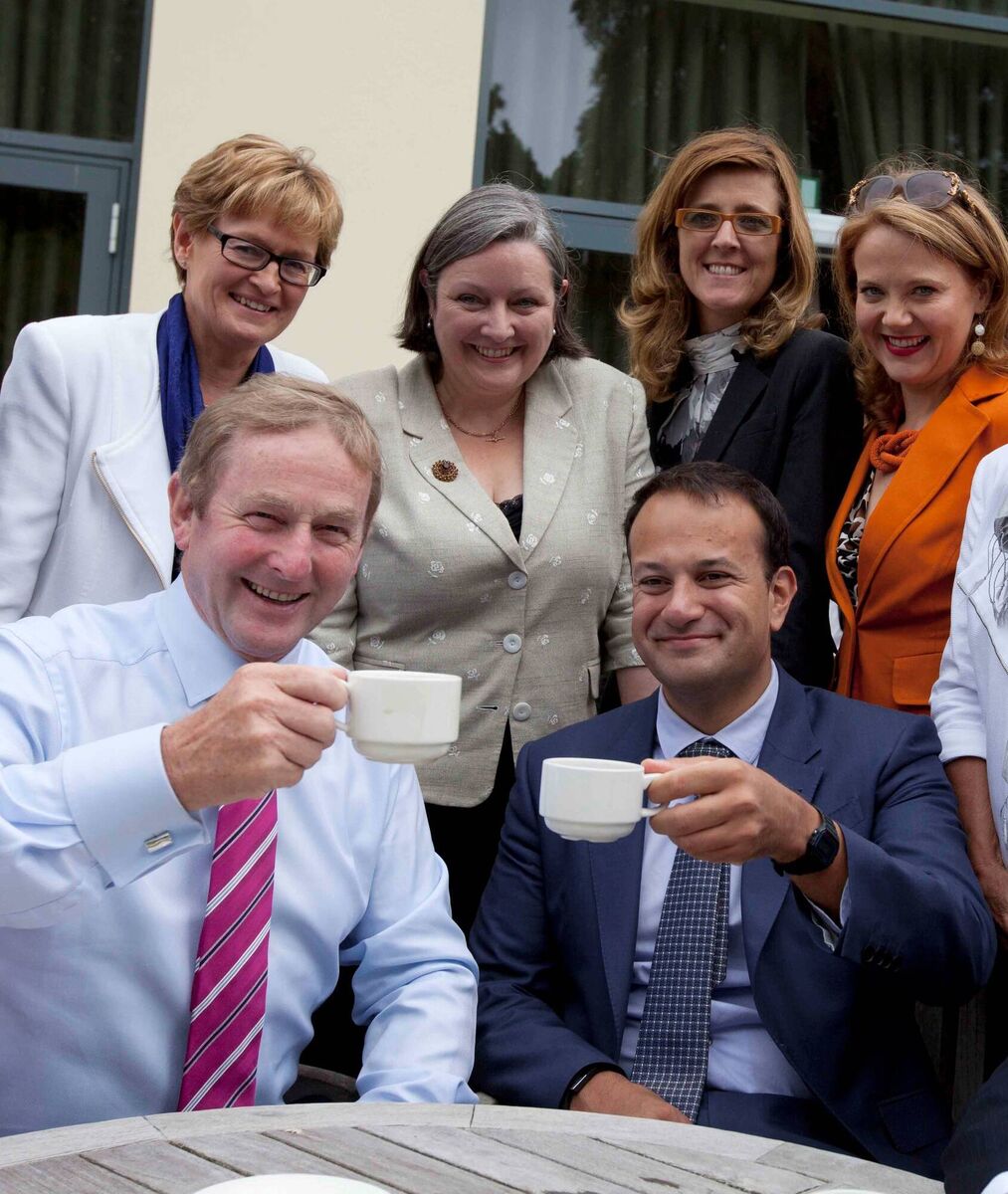
Frank Flannery, the veteran Fine Gael strategist, commented that Fine Gael always loses touch with the public when in government.
“There was never a Fine Gael government that didn’t lose touch,” he said in an RTÉ documentary on Enda Kenny.
Ms McCarthy said there is some truth in what Mr Flannery said. “Some of the Oireachtas members did lose the run of themselves,” she says.
The truth is, Fine Gael is at a crossroads.
With the retirement of Tom Curran as general secretary, the appointment of former advisor to Leo Varadkar, John Carroll, as his replacement represents a fresh start for the party.
Some at the top end of the party think it is time to abandon the centre ground, which it has sought to occupy since 2011, and to shift even more to the right of centre.
“We sort of played at being the catch-all Fianna Fáil-type party, but it does not suit us. We need to be more defined, more deliberate as to how we address our base and those who want to vote Fine Gael,” is the view of one minister.
There is a belief that centrism is no longer viable in the face of such a fractured left. They see there is an onus on the party to tease out its true definition, as a right-of-centre party, and put a real end to civil war politics and allow the real left-right split finally occur in the Dáil.
“Trying to be all things to all people is the Fianna Fáil way; it might work for them, but it will never work for us,” then leadership candidate Leo Varadkar told Fine Gael delegates during the hustings in 2017. "If we try it, we will end up being nothing to no-one. Call them what you like, the squeezed middle, the coping classes ... they must be our priority. Everyone may not agree with us, but I will give Fine Gael definition."
Hitting out at his rival, Simon Coveney, who said the party must work for all, even those who don’t vote for you, Mr Varadkar responded by saying: “You can’t be all things to all men, because you end up being nothing to everyone.”
Moving to defend his controversial “those who get up early in the morning” line, Varadkar said he was talking about the so-called coping class and squeezed middle, who he said should be Fine Gael’s priority.
“If they aren’t our priority, they’ll be nobody else’s,” he said.
Former Dublin Bay South TD Kate O’Connell is very clear that Fine Gael’s future remains in the centre ground.
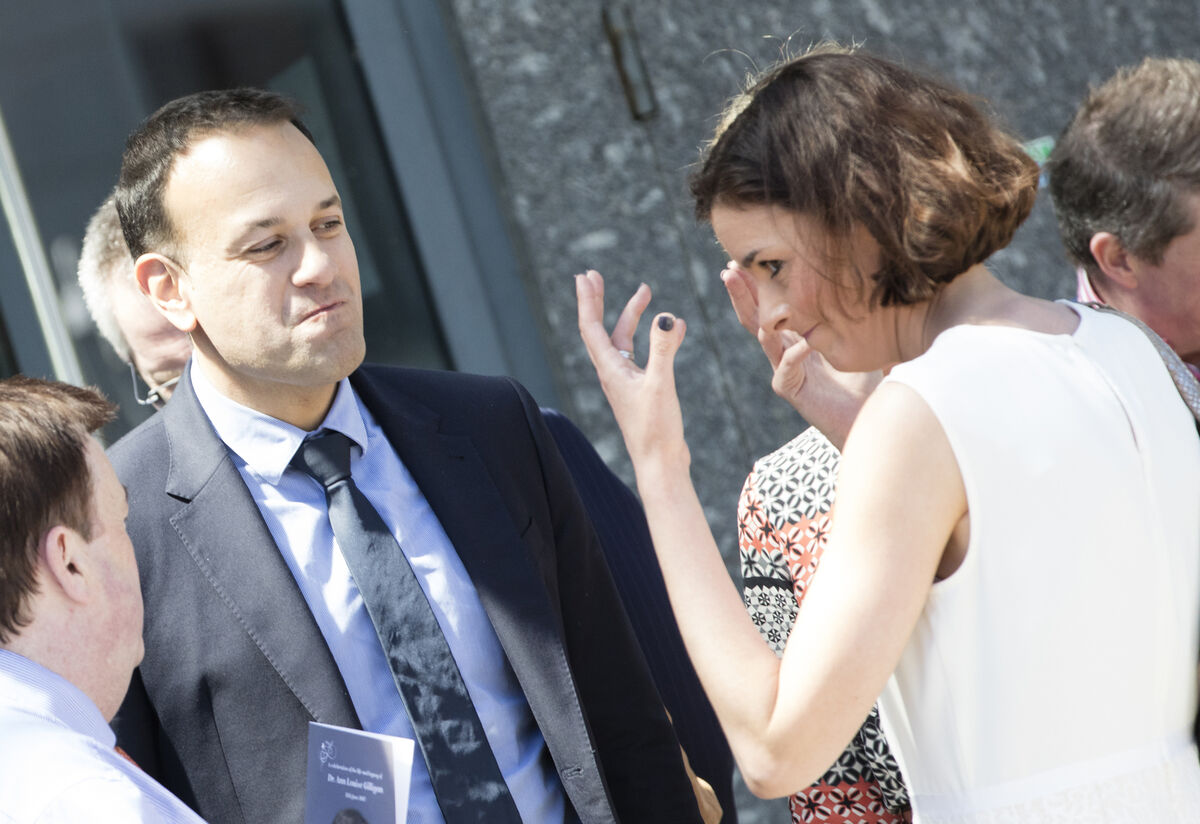
Speaking this week about what the party needs to do, she spoke vividly of being raised in a staunch Fine Gael house of modest means in Westmeath that believed in the Garrett FitzGerald liberal agenda for the country as opposed to the Liam Cosgrave conservative wing of the party.
“I still believe the core values of the Fine Gael membership and the ethos of the party is the same as it was and has been for generations.
"Perhaps there are certain elements, groupings within the party that are to left or to the right of the centrist view of Fine Gael, and to my mind is where I am best placed,” she said.
Her centrist view is certainly shared by Paschal Donohoe, the finance minister, who has made a repeated virtue of the need for the centre to hold.
Mr Donohoe, a devout moderate and centrist politician, has been at pains to emphasise the need to protect the centre ground, and has been virtually at one with his new ministerial colleague Michael McGrath in that crusade. Donohoe has advocated, time and time again, that the centre ground is where Fine Gael needs to fight the battle. If Fine Gael does find itself in a three- or four-way government, will it even get the chance to conclude this debate it is having?
Fine Gael’s battered reputation and standing recovered significantly during the initial stages of the pandemic when assured leadership from Leo Varadkar and Simon Harris served as a great reassurance to the public.
No longer in the driving seat, that goodwill is set to fade, particularly in light of golfgate. But, seven months on from the election, we are still asking the question — just what does Fine Gael stand for?
“We're going nowhere, lads.”
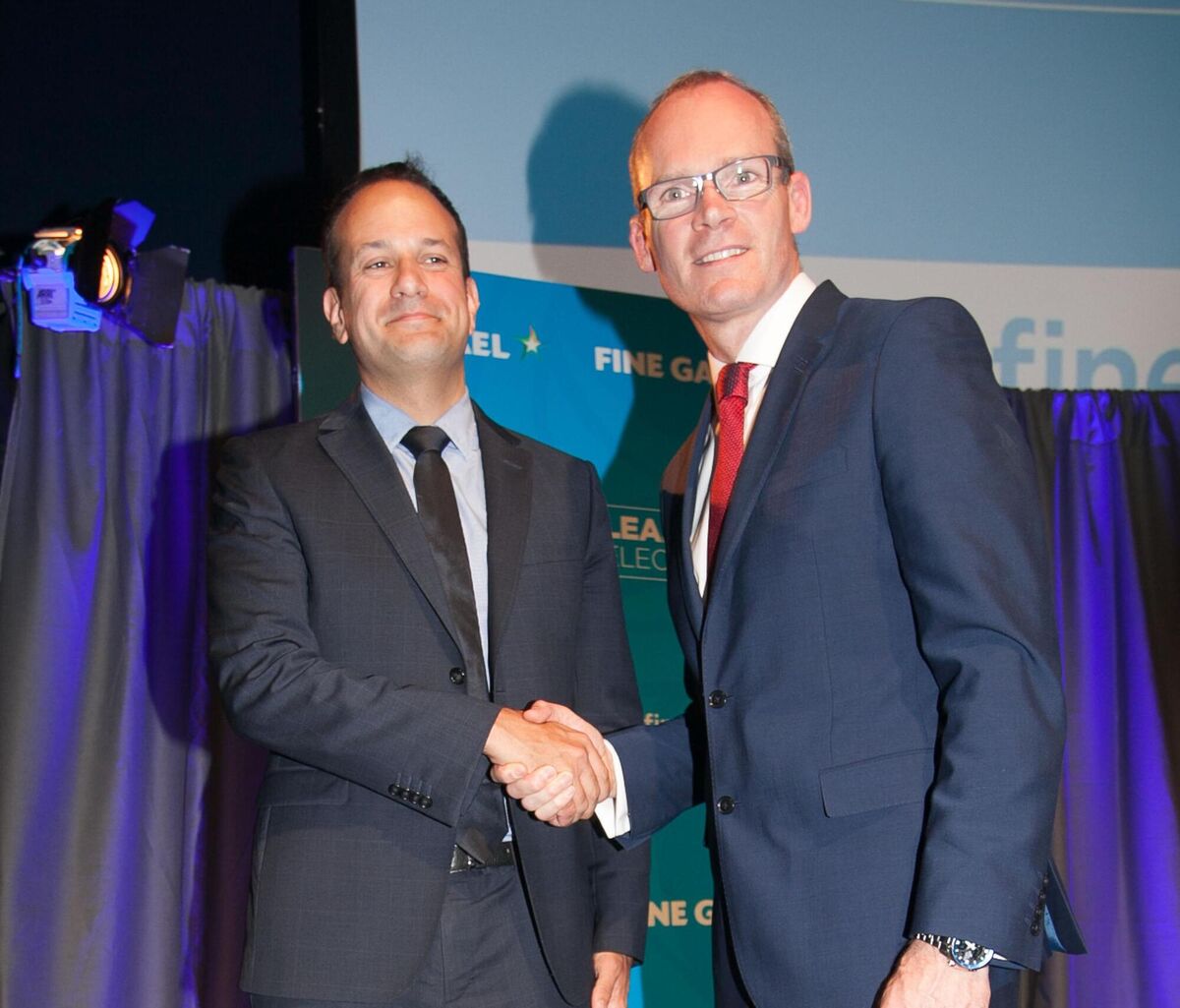
The new government was just a few weeks old when people began taking bets on it collapsing before the end of the summer.
While this scenario feels current, it is merely an echo of 2016, when Fine Gael formed a minority government with the backing of the Independent Alliance and a confidence-and-supply agreement with Fianna Fáil.
Taking weeks of torturous negotiation, the agreement created a strange kind of stasis for both parties, ensuring that though the guns could be trained on each other, they could never really be fired. Fianna Fáil had enjoyed the better election in 2016, but still found itself five seats adrift in the Dáil.
For Fine Gael, Enda Kenny was presented with the opportunity to make history as the first Fine Gael leader to retain the office of taoiseach. In that context, the agreement made some sense. But Mr Kenny had already announced he would not lead the party into the next election, so there was an air of substitute teacher around the government.
The early issues didn't come from across the chamber, however. They came from within the cabinet room, where Mr Kenny and his stalwarts had frequent run-ins with transport minister Shane Ross and his Alliance. Sources at the time said the two men would "tear strips off each other".
"There were real arguments at the cabinet table," said one TD.
"I think it was a bit of an adjustment for people in Fine Gael to see the Independent ministers as equals and for the Independents to slot into a cabinet which had so many big names."
With Mr Ross and Mr Kenny frequently clashing on a number of issues, the government looked set to fall in July, just two months into its reign, when Independent TD Mick Wallace tabled a bill which would have allowed for abortion in the case of a fatal fetal abnormality. Mr Ross and junior ministers John Halligan and Finian McGrath indicated they would defy the government and vote for the bill.
Mr Ross said that his group felt it was a matter of conscience and the government whip would not apply, using one of Mr Kenny's newest phrases against him. “It is our intention to vote for the bill. It is the view the Independent Alliance that on issues of conscience and issues of this sort that there should be a free vote," he said.
"Finian McGrath and John Halligan and I intend to vote for this bill and equally, we’re very, very happy with it because it’s part of the new politics and what we believe in.” It led to a tense few days, with some in Fine Gael questioning whether Mr Kenny would sack the Independents, risking a second election in five months at a time when Fine Gael was losing support.
In the end, the bill was defeated by a margin of 95-45 and Mr Kenny did not blow up his cabinet in pursuit of complete fidelity.
With hindsight, party members say he was right.
"The Wallace bill put Enda in a hard place. If he'd sacked them, he'd have likely brought the government down over a bill that was easily defeated anyway," one said. "Did we want another election then? Absolutely not. The winter had been hard, we'd lost seats, and it would have done us no good."
More trouble would come, however, as the Dáil reconvened. Mr Halligan gave an interview to the Sunday Independent where he said he would take down the government if necessary on the issue of a cath lab at Waterford Hospital.
"I will bring all hell down on top of them if they don't deliver this," he said.
"I am angry with Fine Gael in total. I am really angry. I am angry with the people I negotiated with — Michael Noonan, Simon Coveney, and Leo Varadkar."
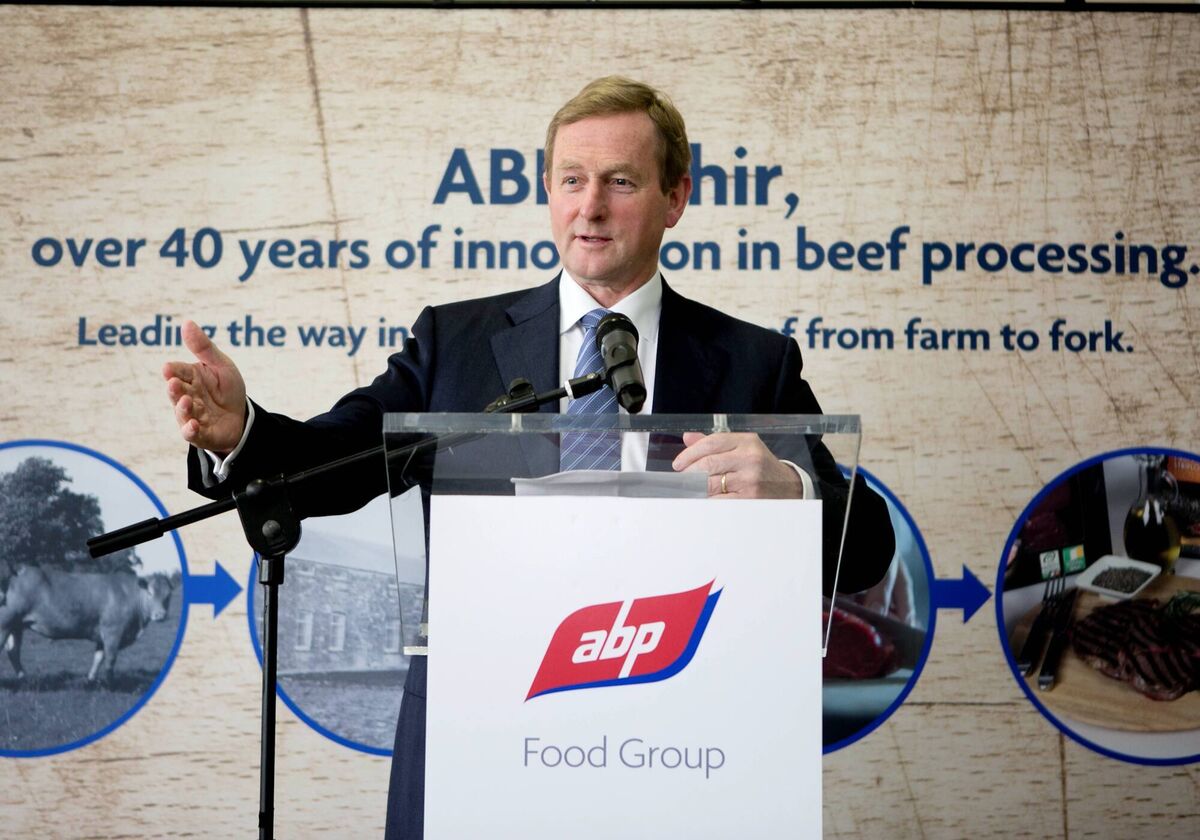
Following the Apple tax ruling, Brexit, and a growing focus on Ireland's homelessness problem, Mr Kenny was forced to defend his government from... a member of his own government.
"The John Halligan thing wasn't surprising; we all knew he was upset," one person said. "But the manner of it made everyone look bad."
After a tough few months, Mr Kenny went on radio with Pat Kenny to claim he had his "mojo back" and said he was entitled to sack Mr Halligan, but stopped short of doing so.
"At that point, you kind of knew it was over. There was a sense that Enda was happy enough to go," said one member.
"You looked at confidence and supply and the taoiseach wanting out and you thought 'we're going nowhere here, lads'."
But Mr Kenny hung on, waiting for the right time to leave. It wouldn't be until the following May that he would step down, following weeks of speculation and another hint by some members of the party that they would move against him unless he went of his own accord.
That would lead to a leadership race between Simon Coveney and Leo Varadkar.
Mr Varadkar was seen as the early favourite of TDs, but Mr Coveney's performances on the hustings won him many supporters. In the end, Mr Coveney would win the popular vote of the party members, but Mr Varadkar would win the parliamentary party and, therefore, the leadership and the keys to the taoiseach's office.
"The fact that both of the candidates looked viable really helped," said one TD, noting that the "Varadkar bounce" saw Fine Gael enter the summer with its highest approval rating for many years.
But avoidable mis-steps in the public eye — about the strategic communications unit, a phone call with Donald Trump, or a video made on the government jet — kept popping up and there was a growing feeling that an election was needed. Along the way, the government oversaw a rebounding economy where money was being saved for a rainy day and the referendum on repealing the Eighth Amendment passed, giving the government another shot in the arm.
However, as the months ticked by, the government became weighed down by its inability to tackle the housing and health crises and in January, Mr Varadkar dissolved the 32nd Dáil and called an election for February 8.
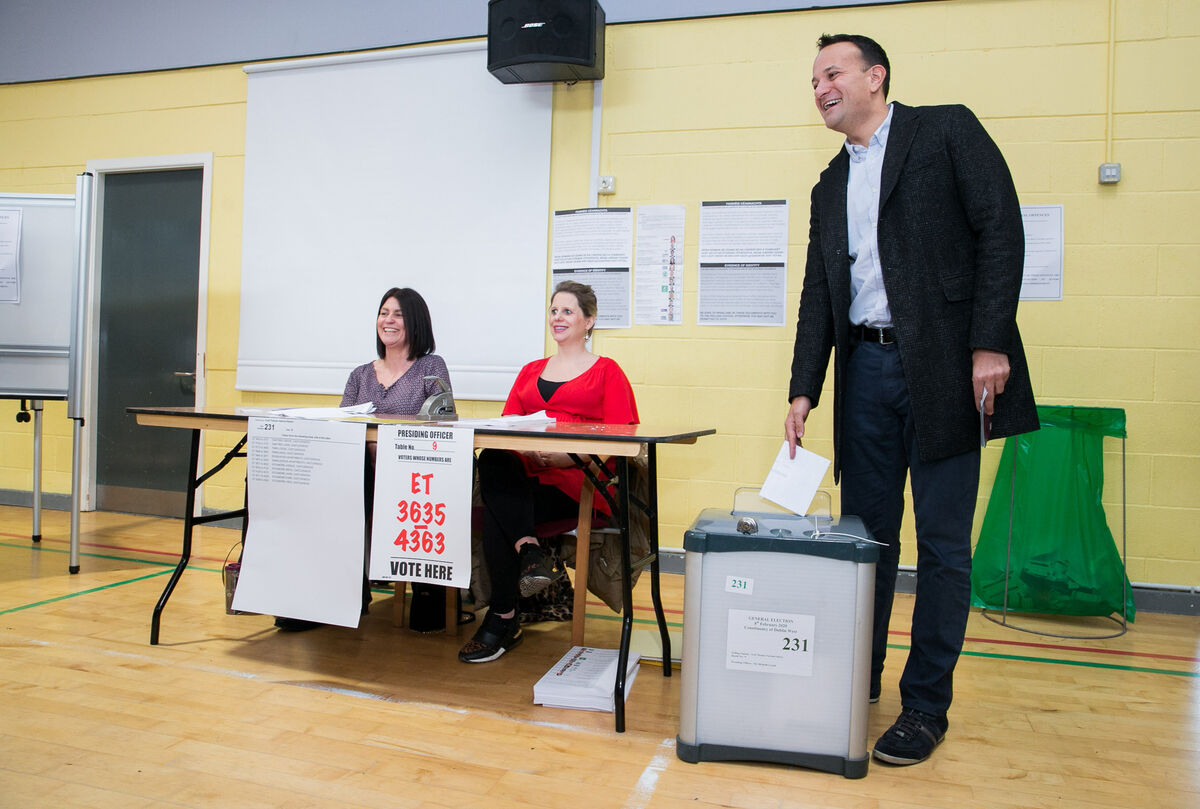
Leo Varadkar was in Carlow two days before this year's general election, warning the media not to write his electoral obituary just yet.
He said, presciently, that February's general election would be “one of the most important for generations” and called for people not to fall for "amadáin economics".
Internally, however, his party was not so much hitting the panic button as hammering it and hoping.
TDs were raging at what they saw as the centralising of the campaign by Mr Varadkar and his allies — most notably those in the capital.
“The campaign has been a fucking disaster,” one senior party figure told this newspaper at the time.
“The D4 boys ran it again and it hasn’t worked. Blame nine years all you like — we made things difficult for ourselves.” On February 8 the party would lose 15 seats, falling from the largest party in the Dáil to the third-largest.
Mr Varadkar was readying himself and his party for opposition and was prepared to sit back as Fianna Fáil debated internally whether to form a coalition with Sinn Féin.
"It was a poor campaign," one former TD said.
"It never felt like we got any traction and were constantly fighting fires or making mistakes.
"I think people banked on Leo handling everything a little too much. They wanted it to be a brand election for us, but there was only one brand winning."
Throughout the election, Fine Gael and Fianna Fáil had tried to hit Sinn Féin on everything, from its economics to its structure, to the IRA, and as the election drew closer, it was felt that Sinn Féin was dodging it all.
"We couldn't lay a hand on them," said one TD.
"You were making legitimate points and nothing stuck. I think our campaign was probably too negative."
Another TD said that the election was lost online, where Sinn Féin and other left-leaning parties had mounted slick offensives.
"It's definitely something that we have to look at going forward," the TD said.
"It was a winter election; people were tired and we couldn't reach as many on the doors.
"You had the Soc Dems doing really good videos that were resonating and ours just wasn't."
Of course, offline, the campaign was bedevilled from the get-go.
A planned commemoration of the RIC and Dublin Metropolitan Police became a controversy after politicians across Ireland announced they would boycott it, just before the campaign started.
"Somehow, the message on social media was that Leo was honouring the Black and Tans and it became a big issue," the TD said.
Then, on the first day of campaigning, a homeless man was seriously injured when the tent he was sleeping in along Dublin's Grand Canal was removed by a machine during a clean-up.
For a campaign that would focus so heavily on housing, that it happened in the housing minister's constituency meant Fine Gael could not escape the backlash.
Just days later, the party would delete a Twitter video it had posted, of staff in paper masks of Fianna Fáil TDs, running around Dublin city looking for policies, set to Benny Hill music.
"That one didn't hit the mark, to say the least," said one TD.
At the end of January, with just over a week left to the election, Mr Varadkar had a solid performance in the seven-way leaders' debate, telling Micheál Martin that his party had to "spend five years cleaning up" after Fianna Fáil, and winning plaudits for saying there were "nutters" in every party, including his own.
Then came the morning after.
"A slip of the tongue would be generous — a fucking disaster would be fair," said one party member when asked about Catherine Noone's infamous contribution to the general election campaign.
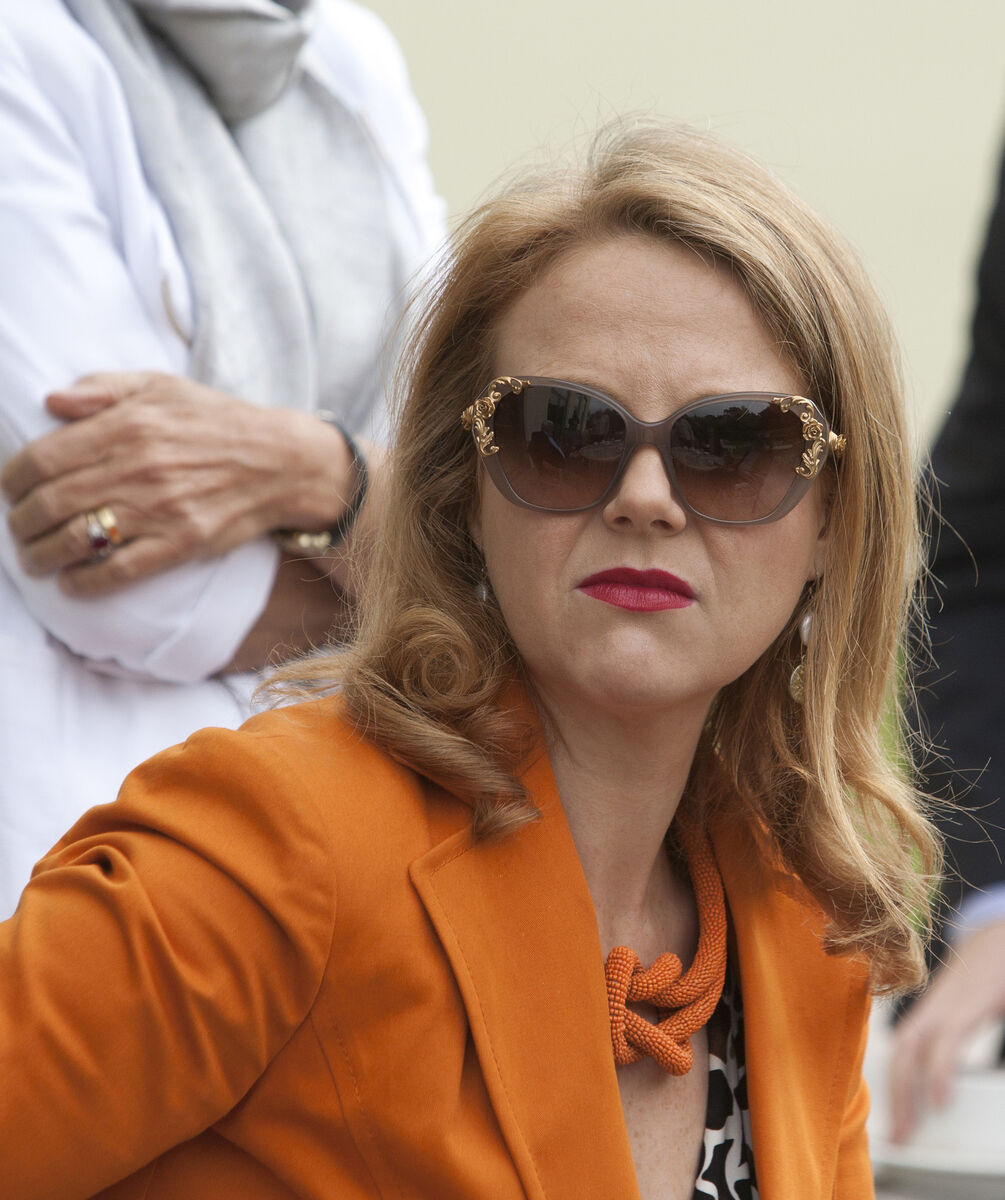
The then-senator, a Dublin Bay North candidate and one-time running mate of Mr Varadkar, had said while canvassing that the then-taoiseach was "wooden".
“He’s autistic like, he’s on the spectrum, there’s no doubt about it. He’s uncomfortable socially and he doesn’t always get the in-between bits,” she said.
"If I do say so, I am much more natural than he would be. I’ve been in rooms with him and he doesn’t know what to do with himself. He’s naturally shy. But he’s actually a very good politician," she added.
Asked to clarify her statement, she first denied the remarks, before being told there was a recording of them.
“Sometimes I say, ‘Oh God, I’m a bit special’ but I don’t mean it to be derogatory," she said.
The incident forced Simon Harris, whose brother Adam is head of the autism charity AsIAm, to tweet a rebuke, though Mr Varadkar went on to accept an apology from Ms Noone.
"It was dreadful," said a Fine Gael TD.
"It's one thing dealing with outside issues. It's another entirely when your own party is doing it to you."
Fine Gael would go from polling around 28% before Christmas to a nadir of 17% in the week before polling day, before taking 20.4% of first preferences on the day itself.
Another TD said that clawing- back of votes was down to Mr Varadkar.
"I thought Leo won the last couple of debates and it was the first time we had a bit of momentum. In a way, the election came a couple of days early for us," the TD said.
Come the election did, however, and 12 Fine Gael TDs would lose their seats, including high-profile minister Regina Doherty, chief whip Seán Kyne, and five junior ministers.
In the cold light of day, Fine Gaelers look back and say they were fighting a Sinn Féin tide.
"We were very much on the crest of a wave in 2011, but when you were hearing about Sinn Féin getting TDs elected who were on their holidays, you knew it was the same thing," said one.
"I think they could have gotten a lot of people elected that day.
"On the other side, our brand was considered negative and damaged, but we still ended up within two seats of them with one in five votes."

Within hours of February’s election result, Fine Gael leader Leo Varadkar was openly preparing for opposition. It was incumbent now upon the other parties to form a government such was the demand for change.
Unlike in Fianna Fáil, Fine Gael TDs had little or no appetite to go into government with Sinn Féin, having made strong pledges not to during the election.
However, so too had he pledged not to go into coalition with Fianna Fáil, saying that allowing that party back into government would be “like asking John Delaney to take over the FAI again in nine years time”.
With no real urgency to the talks, February ticked down — and then Covid-19 landed in Ireland.
The then-taoiseach delayed his trip to the US for St Patrick’s Day but on March 11, at the Ireland Funds dinner at Blair House, he received word that the virus had been updated to a global pandemic and that the US had banned entry from 26 EU countries.
He immediately moved to an upstairs room with his team before delivering a sombre address the following morning.
Schools, colleges, and childcare would close for two weeks as dire warnings of an overrun health service and makeshift morgues rang around the world.
It would mean that a change of government would not come soon, but it would also lead to the public forgetting all about February.
There is a real sense that Mr Varakdar and his health minister, Simon Harris, handled particularly the early stages of the pandemic really well. With Mr Harris, you were constantly seeing him on media — yeah he had the one slip-up (on Covid-19 being the 19th coronovirus) — but people really connected with him.
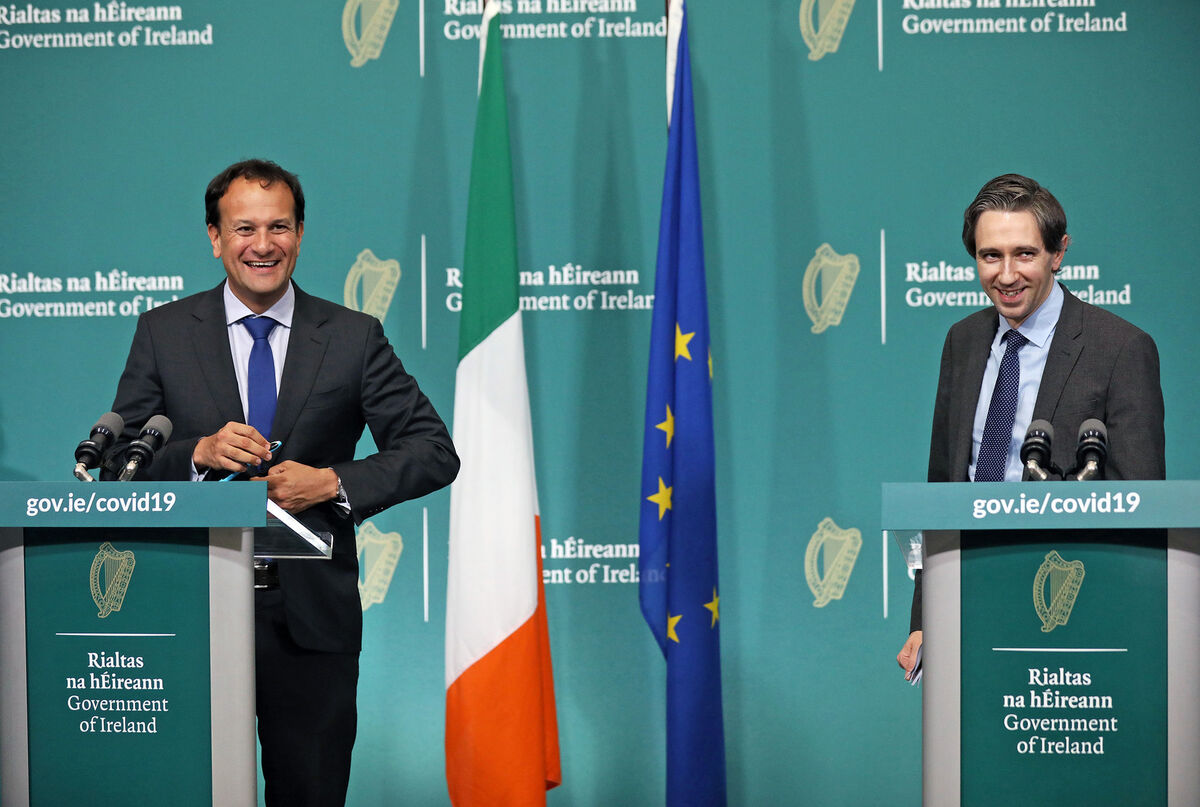
Indeed, Mr Harris’s own colleague, Frankie Feighan, said as much in the Dáil, though not in glowing terms.
He said: “Every night my wife sees him on the television and tells me how old he has become. It makes me feel very good that he is at least 25 years younger than me.” That early handling of Ireland’s pandemic response — despite a number of failures in congregated settings — solidified the Fine Gael reputation in the public’s eyes. They were the party of calm and Irish people respond well to calm.
By March 25, the party had jumped 13 points in the polls and a historic coalition with Fianna Fáil was mooted. Though the progress to that agreement would feel never-ending, it was eventually reached and, on June 27, Mr Varadkar would become the first taoiseach to ever step back into the tánaiste’s role.
It is a transition that has been interesting to say the least.
“He’s outplaying us,” says one Fianna Fáil source, frustrated that Varadkar has outmaneouvered party leader and Taoiseach Micheál Martin and has appeared to be in charge at critical times. “But what do we do? Pull down the Government because he’s sending tweets?” Mr Varadkar’s habit of tweeting out Government news before the Government announces it, and his apparent second-guessing of Government decisions is not political, says one TD, who denies there is any real jockeying for position among the Government parties.
“I think he’s just not used to tempering his language anymore,” says the source. “There is a real desire to see the Government work and work well. That’s our only hope for the next election really.”
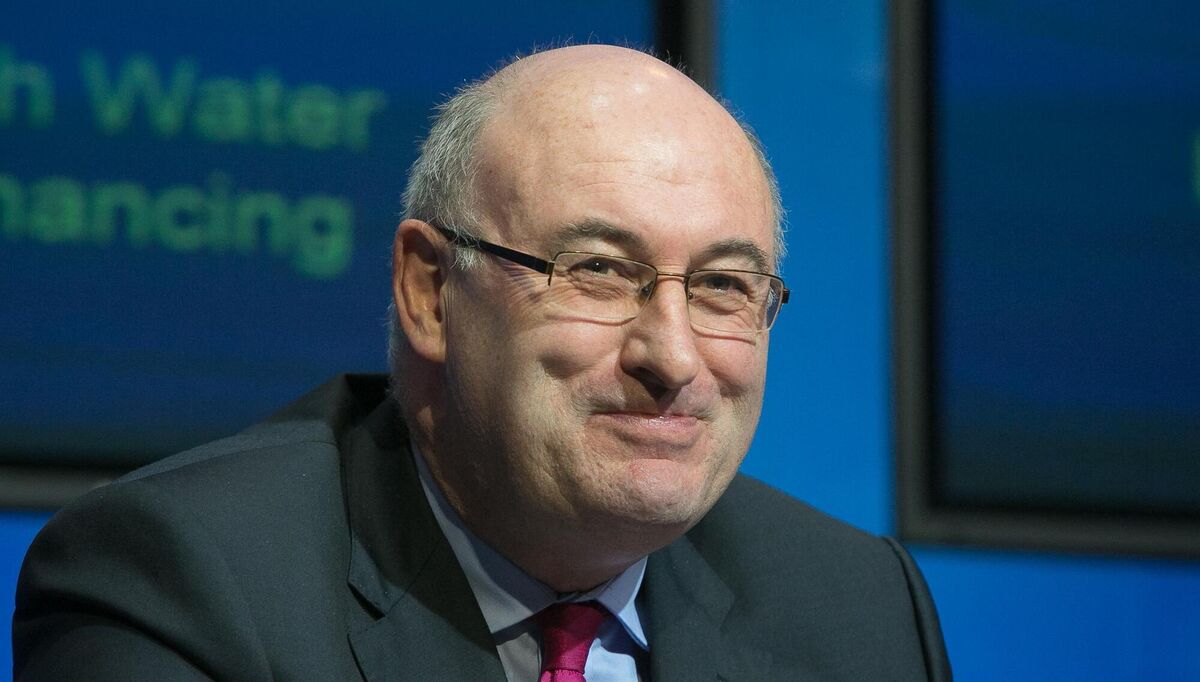
Privately, Fine Gael members say they are not spilling tears at Fianna Fáil’s struggles, but Golfgate was a reminder that Fine Gael is, in fact, in power when three of its senators and a party grandee EU Commissioner were among those who infamously dined at the Station House Hotel.
Many in Fine Gael, however, say that moving on from Mr Hogan will not be totally a negative.
A source says: “With the Cabinet selections he made, it feels now like Leo’s playing his own team, not Enda Kenny’s, in a big way. That younger, more vibrant Fine Gael can be our future.”





